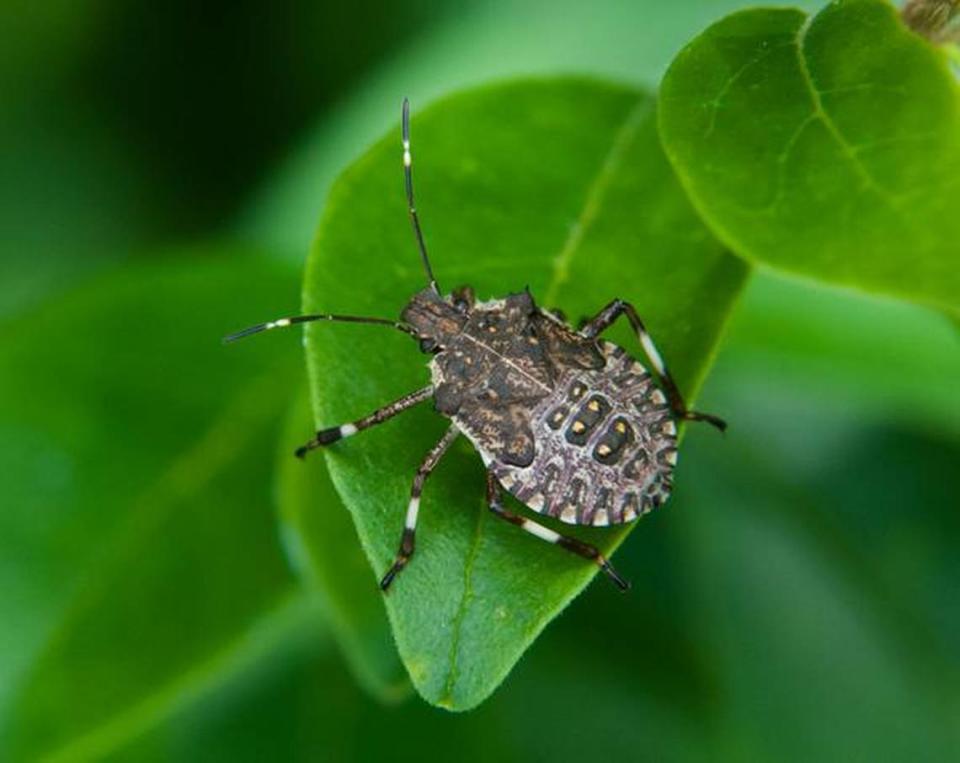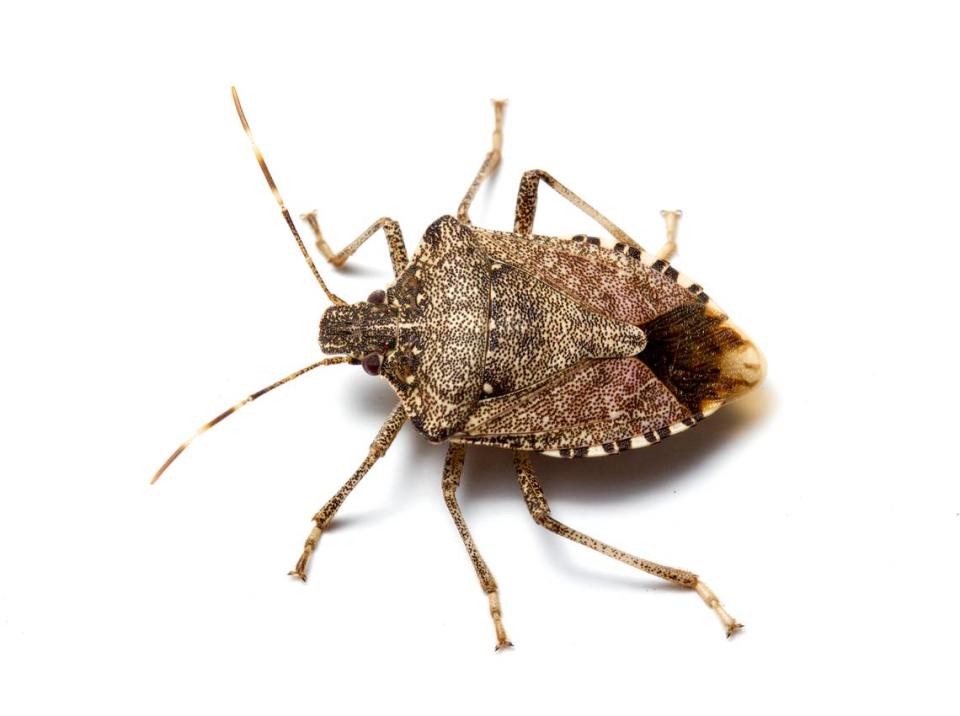Are stink bugs crawling around inside your NC home? Tips on how to deal with them
Stink bugs are another crawly insect taking over the outside — and sometimes even the inside — of our homes in the Triangle this fall.
The News & Observer spoke with Matt Bertone, director of NC State’s Plant & Disease Insect Clinic, to learn more about these bugs and what we can do about them in our own homes this fall.
What are stink bugs?
Stink bugs are the “shield-shaped” bugs we usually see in and around our homes this time of year, Bertone said.
In North Carolina, the most common stink bug invading homes is the brown marmorated stink bug (Halyomorpha halys). They’ve been confirmed in 80 of North Carolina’s 100 counties. These bugs are brown-gray in color and leggy with long antennae.
Many stink bug species feed on plants, while others are predators of other bugs.
They are true bugs, meaning they have sucking mouthparts. Because of this, their name is two words: “Stink bug,” not “stinkbug.”

Why are we seeing so many stink bugs this fall?
Like other bugs — including kudzu bugs, the brown-ish “ladybugs” that might be swarming your house this fall — stink bugs overwinter as adults and need shelter to do so, Bertone said.
As cool weather rolls in, these bugs look for secure, comfy places to hibernate until the weather warms up again. Unfortunately for us humans, they like to use our houses for their winter naps.
They might move around on warm days, but they’re generally in a state of reduced activity, NC State Extension says. They don’t feed or lay eggs during their overwintering period.
Stink bugs are most active during the warm parts of the year. You’ll probably run into them if you look deeply at nearby plants and natural areas, Bertone said.
Why do stink bugs smell bad?
Their foul odor — their defining characteristic and namesake — is a defense mechanism against predators.
They release a foul-smelling odor from tiny holes in their abdomens when frightened, a practice to dissuade predators from eating them, according to pest control company Plunkett’s.
(But in the United States, since they are non-native species, they don’t have any specific predators. This can make them a fast-growing pest.)
In our homes, the bugs only produce this strong smell when killed or crushed, and it can even last up to an hour.
What do stink bugs smell like?
Some people compare their smell to cilantro.
“I think it smells like pungent sour apple,” Bertone said.

How can I get stink bugs out of my home?
When they’re on the outside of homes, you can hose them off with a garden hose to discourage them from sticking around. But the bugs are mobile, so dispersing them might just make them come back.
The most long-term solution is to focus on sealing up cracks and holes around your home — such as in the netting of your window screens — so stink bugs and other fall critters can’t get inside.
If they do get in your home:
Avoid crushing them: This is when they release their stinky scent, which can linger for an hour after released, Plunkett’s says.
Vacuum them up: If they’re still alive, you can place the contents of the vacuum bag into a freezer bag, then freeze the bugs to kill them before discarding.
Drop live bugs into soapy water: This is another method of killing live bugs inside the home. Bertone recommends using a shop vacuum and putting soapy water inside to do this in a more two-in-one fashion.
Use a desk lamp: Some people have seen effective trapping using a desk lamp over a pan of soapy water when it’s dark, Bertone says. This is most effective when no other light sources are on at night.
Are stink bugs dangerous?
For the most part, no.
“Except for their annoying presence, they do not harm people or pets,” NC State Extension says.
They usually don’t cause any property damage, though they have been known to clog heat pumps and power equipment when in large numbers.
Triangle Asked & Answered: What do you want to know?
Have a question about something in our community? The News & Observer’s Service Journalism team wants your questions for our Triangle Asked & Answered series. Reach out to us by filling out this form or by sending an email to ask@newsobserver.com.
Why are brown-colored ‘ladybugs’ all over my house this fall? NC State expert explains
How do you get free parking for the NC State Fair? What to know about lots, shuttles, more

